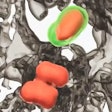
Patients who undergo lung transplant surgery are at risk of certain complications, most importantly chronic lung allograft dysfunction (CLAD). Researchers from the University of Michigan have new evidence detailing the most effective treatment approach to prevent CLAD. The paper, “Impact of Tacrolimus vs Cyclosporine on Chronic Lung Allograft Dysfunction Incidence and Allograft Survival in the International Society of Heart and Lung Transplantation Registry,” was published in The Journal of Heart and Lung Transplantation.
Calcineurin inhibitors are the most common immunosuppressants prescribed to lung transplant recipients to prevent rejection, or CLAD. The efficacy of the two available calcineurin inhibitors, cyclosporine and tacrolimus, had not been compared — until now.
A research team led by Michael Combs, MD, MS, evaluated data from the International Society for Heart Lung Transplantation Thoracic Organ Transplant Registry. The objective was to determine if there was a survival benefit of using tacrolimus versus cyclosporine following surgery.
Of the 22,222 individuals included in the dataset, 88.6% had received twice-daily immediate-release tacrolimus. This population had a much lower rate of experiencing CLAD than the individuals who took twice-daily cyclosporine.
In a university news release, Dr. Combs said this is a positive finding, since majority of patients in actual practice receive the immediate-release (IR) formula of tacrolimus. Prior research, he said, uncovered the once-daily extended-release (XR) version of tacrolimus produces the best outcomes. This confirms that both dose types of tacrolimus are clinically significant to cyclosporine.
“In our study, we found that twice-daily tacrolimus not only resulted in lower rates of CLAD relative to cyclosporine, but it was also associated with improved overall survival after lung transplantation,” said Dr. Combs, who is assistant professor of pulmonary diseases and internal medicine at Michigan Medicine. “This is an important, patient-centered finding, which has not been previously demonstrated.”
Future research will focus on comparing the performance and benefits of twice-daily tacrolimus IR and once-daily tacrolimus XR, Dr. Combs said.























